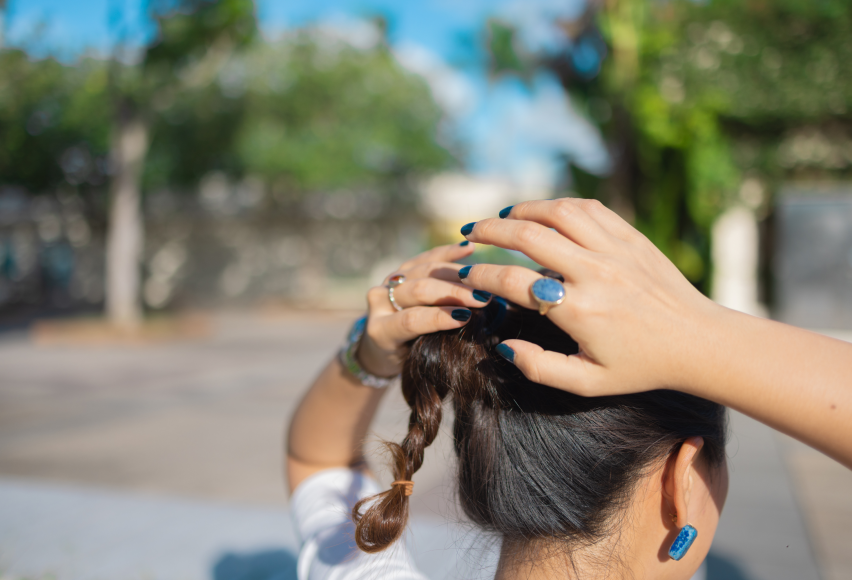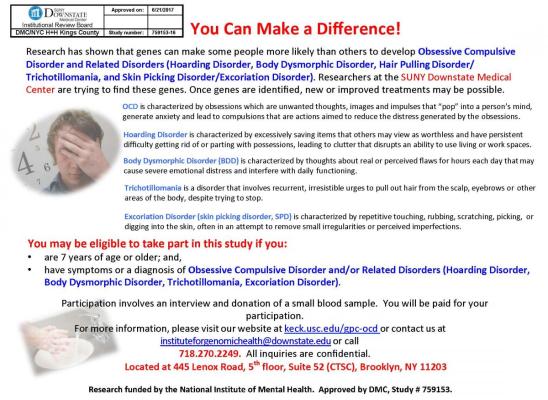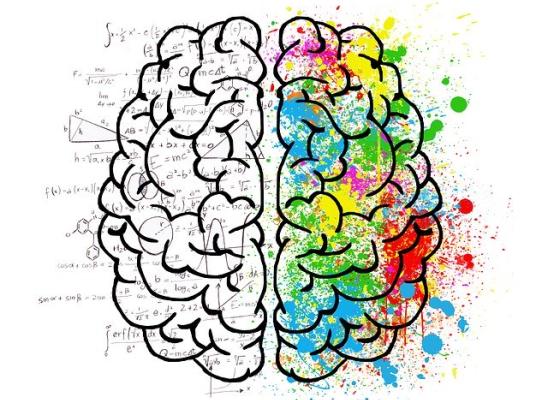Internet-based Self-Help for Trichotillomania: What Does the Research Say?

Online test
Find out the severity of your symptoms with this free online test
When you think of treatment for body-focused repetitive behaviors (BFRBs) like Trichotillomania, commonly referred to as “trich” or hair pulling, you probably think of someone being treated by a therapist using an approach such as Habit Reversal Training (HRT). After all, HRT has long been considered the gold standard for the treatment of BFRBs and is most often conducted by a therapist as part of the treatment process. However, not everyone who has trichotillomania seeks traditional treatment.
It’s not uncommon for people with mental health issues of all kinds to seek out self-help options. In fact, research suggests that most people with mental health issues will attempt to work through them on their own before seeking professional help.
People living with hair pulling are no different. Some may never seek professional help or prefer to try self-help for any number of reasons (e.g., cost, stigma, accessibility). It doesn’t mean that they can’t heal. It simply means that the traditional approach to treatment may not be the best fit for everyone. And that’s where self-help can bridge the gap.
Self-Help for Trichotillomania
Evidence suggest that various forms of self-help can be a powerful option for managing a variety of mental health disorders including trich. Self-help is, simply put, using your own efforts and resources to cope with life problems. Self-help can take many forms including things like books, support groups, apps, fidgets, and more. More recently, self-help has taken the form of guided internet-based interventions that offer an alternative to traditional therapy.
Internet-based self-help takes some of the most effective modalities for treating BFRBs like trich and presents them in user-friendly, self-guided programs. Some of those modalities include:
- Self-guided HRT - Replaces the old behavior (e.g., hair pulling) through awareness and competing response training
- Decoupling – The behavior (e.g., hair pulling) is disrupted before it is completed, and it is replaced with a slightly different behavior. This intervention has been shown to be especially effective for hair pulling and nail biting.
- Decoupling in-sensu - A variant of decoupling in which the behavior is imagined and replaced by an alternate action.
- Habit replacement - Replaces the harmful automatic habit (e.g., hair pulling) with a harmless, unobtrusive action
- Stepped care – More of a process, this approach involves using less intensive, restrictive, or costly methods first, followed by more structured, intensive ones as needed.
- Expressive writing – Similar to journaling, expressive writing is a form of personal and emotional writing sometimes used in both self-help and therapeutic approaches.
These interventions have consistently been shown to improve quality of life for people living with BFRBs like trich. Self-help can be empowering too, reinforcing the idea of “I think I can.” There are also a number of websites devoted to BFRBs, including Trichstop.com, that offer resources and programs.
But is self-help effective and how does it fit into an overall approach to treatment?
The Benefits of Self-Help
In a review of studies focused on self-guided interventions for BFRBs, researchers take a closer look at the use of internet-guided self-help programs and the role they can play in treatment of BFRBs like trich. The review focused on twelve randomized controlled trials (RCTs) that included self-help internet-based interventions for adults with BFRBs.
The review findings suggest that self-help does indeed play a role in the treatment of BFRBs like trich:
- 70% of participants reported positive effects, and users experienced significant improvements in quality of life and reductions in depression symptoms.
- Self-guided HRT, decoupling, and decoupling in-sensu showed significant symptom reduction across multiple studies, with significant effects on quality of life.
- Habit replacement was found to be particularly effective for BFRBs.
- The stepped care model was rated high in patient satisfaction and showed positive rates of symptom reduction.
- The popularity of websites devoted to internet-based self-help reflected a high demand for online self-help treatment options including online therapy.
The researchers noted that online self-help resources offered a number of potential benefits to users, especially for those for whom access to more traditional therapy is limited:
- Online resources minimize barriers associated with stigma or limited geographical access to treatment.
- Online resources reduce financial barriers as many are free or reasonably priced, making them affordable for more people.
- These online interventions may serve as a bridge to in-person care for those who are awaiting therapist-guided treatment.
- Internet-based interventions may also help reduce stigma and encourage individuals to seek treatment who might otherwise feel shame or fear judgment in in-person settings.
Where Self-Help and Therapy Meet
Of course, self-help alone may not be enough for someone with severe symptoms or other mental health needs that require the support of a therapist. The researchers noted that for some, therapist-guided interventions may provide a more personalized and comprehensive experience, leading to better treatment outcomes than relying on self-help alone.
If you need more, therapy can be the perfect next step towards healing and recovery. Professional help can give you the additional tools and support you need to make the progress you seek. The good news is that even if you choose therapy, you can still reap the benefits of online interventions. Today’s online therapy can be a convenient and cost-effective alternative to traditional in-office therapy and has been shown to be just as effective.
Self-help resources can be a great starting point for managing your hair pulling. If you find yourself wondering whether therapy might be the next step for you, reach out to a therapist and have a conversation. It just might be the step you need to continue your healing journey.
References
1. Norcross, J. C. (2000). Here comes the self-help revolution in mental health. Psychotherapy: Theory, Research, Practice, Training, 37(4), 370–377. https://doi.org/10.1037/0033-3204.37.4.370
2. Falbe-Hansen, L., Le Huray, C., Phull, B., Shakespeare, C., & Wheatley, J. (2009). Using guided self-help to treat common mental health problems: The Westminster Primary Care Psychology Service. London journal of primary care, 2(1), 61–64. https://pmc.ncbi.nlm.nih.gov/articles/PMC4453713/
3. Murase, E. M., Raygani, S., & Murase, J. E. (2025). Narrative Review of Internet-Based Self-Help Tools for Body-Focused Repetitive Behaviors: Recommendations for Clinical Practice. Dermatology and therapy, 15(4), 811–818. https://pubmed.ncbi.nlm.nih.gov/40102374/
4. Moritz, S., Penney, D., Ahmed, K., & Schmotz, S. (2021). A head-to-head comparison of three self-help techniques to reduce body-focused repetitive behaviors. Behavior Modification, 46(4), 894-912. https://journals.sagepub.com/doi/full/10.1177/01454455211010707
Online test
Find out the severity of your symptoms with this free online test
Start your journey with TrichStop
Take control of your life and find freedom from hair pulling through professional therapy and evidence-based behavioral techniques.
Start Now



